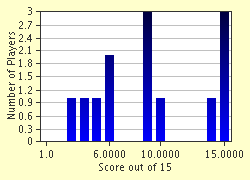Quiz Answer Key and Fun Facts
1. Which of the following is NOT one of the literary and historical contributions of the "Divine Comedy"?
2. Dante originally named his work "Commedia".
3. What does Dante represent in the Epic?
4. Why is Dante unable to find the way to Mount Purgatory?
5. On his way, he is confronted by three beasts. What do they represent?
6. What does Virgil represent?
7. Which of the following examples best describes the rhyme scheme of the poem, which is known as Terza Rima?
8. What is the following excerpt, said by Virgil, an example of?
"Sub Julio was I born, though it was late,
And lived at Rome under the good Augustus,
During the time of false and lying gods."
9. How old is Dante in the poem?
10. Why does Dante summon the muses in Canto II?
11. According to Dante, who else entered the afterlife and returned?
12. Three women watch over Dante. Two of them are St. Lucia and Beatrice, but who is the third woman?
13. Why does Virgil admonish Dante?
14. Along with Petrarch and Cavalcanti, Dante is considered one of the "Three Fountains" or "Three Crowns" of Italian Literature.
15. What does Beatrice symbolize?
Source: Author
GoldenDesert
This quiz was reviewed by FunTrivia editor
looney_tunes before going online.
Any errors found in FunTrivia content are routinely corrected through our feedback system.

